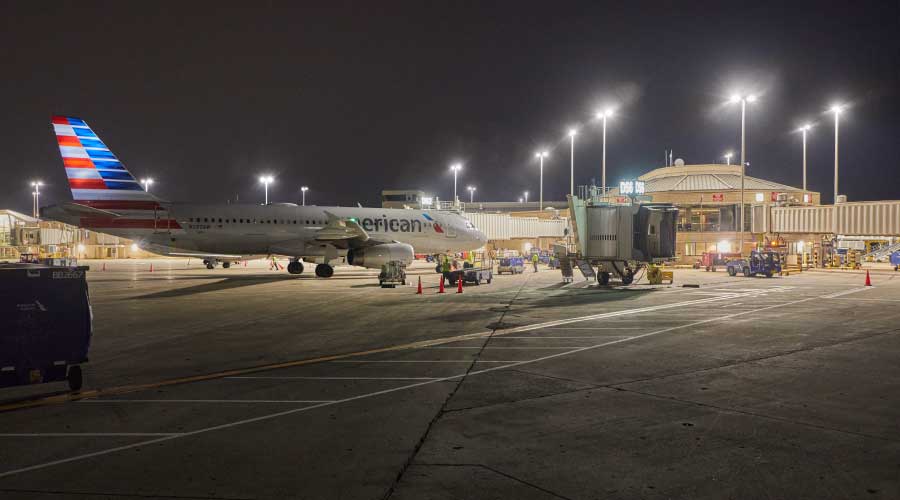Increase Energy Efficiency with Lighting Retrofits
Improving lighting in the name of energy efficiency is an important — and very achievable — goal. But if a facility manager unwittingly chooses energy efficient retrofits that simultaneously degrade the quantity and quality of lighting, occupant satisfaction and productivity can plummet, nullifying the benefit of any energy savings.
The solution? It starts with research of available options, analysis of facility needs and careful planning. While today's lighting technology makes it possible to increase energy efficiency while maintaining or improving lighting quality, facility managers who rush into a poorly planned retrofit may find that the result is a drastic change in the quantity or quality of light.
Lighting designers can tell horror stories of retrofits gone bad. Mitchell Kohn, president of Kohn Lighting Design, cites one organization that replaced incandescent lighting with florescent lamps. Although their energy spending was cut in half, their available light was cut by 80 percent, Kohn says.
The key with a retrofit, Kohn says, is to maintain uniformity and light quality while simultaneously boosting efficiency. For example, if an upgrade isn't properly designed, there may be a drop off in footcandles between fixtures.
Boosting Efficiency
Lighting designers say it's hard to do a retrofit these days and not see efficiency gains, simply because lamp and ballast technology has become so good during the last decade.
The size of the energy opportunity depends on how old the existing lighting system is. With a system that pre-dates 1990, a wholesale retrofit is in order.
"Look at the lamps and ballasts in your facilities," says Naomi Miller, senior lighting engineer at Pacific Northwest National Laboratory. "If they were installed 15 or more years ago, they are not as efficient as today's fluorescent lamps and ballasts."
It's also worth taking a look at fixtures. Consider parabolic luminaires. Such fixtures might only be 60 percent efficient, says Jim Baney, partner and lighting designer at Schuler Schook. Retrofitting those fixtures with modern ballasts and lamps will save energy, but that approach might not be the best way to go.
"For facilities with older, parabolic-style fixtures, a complete retrofit might be warranted, as modern fixture designs can be up to 85 to 90 percent efficient," Baney says.
But that doesn't mean newer lighting systems aren't candidates for upgrades. For example, the current generation of T8 lamps includes models that offer greater lumen output, while ballast options include high- and low-output models designed for such lamps. Properly applied, these lamps can produce energy savings compared to standard T8 systems, plus the ability to customize lumen levels to a specific space.
"Florescent lamps are getting smaller, so the fixture can do a better job controlling output. They last a lot longer than people recognize and the color is stable," Kohn says. "It's an old standby, and most of the time efficiencies are higher than anything else on the market."
Miller also recommends that facility managers look for places that are over-lit without good reason.
"For example, corridors don't usually need the same light levels as office space," she notes. "Often the light fixtures in hallways are three- or four-lamp troffers. You might be able to remove one or two lamps and their ballasts from the fixtures and maintain satisfactory light levels."
Closer Look
It is easy to be deluded into thinking that more efficient lamps automatically return greater savings, but lighting designers say that the fixture and other measures also have to be accounted for to best measure energy savings.
Kohn says that sometimes, particularly with a recessed troffer, somebody suggests reducing the number of lamps by one, but makes up for it by putting in a specular reflector. The problem with that solution, says Kohn, is that lighting output doesn't matter because specular reflectors rarely throw light on the walls. Instead, such reflectors return light to a particular workspace and leave the walls looking dark and the overall space gloomy, degrading the light quality. Spacing of fixtures, he says, is of prime importance when the goal is to improve efficiency, while reducing fixtures (or lamps), and retaining light quality.
A lighting upgrade is an opportunity to take a step back and rethink aspects of a lighting system that was designed 10 or more years ago. "Sometimes manufacturer reps will suggest one-to-one replacement," says Stefan Graf, a principal and lighting designer at Illuminart. "But sometimes with independent analysis, you may get by with 30 percent fewer fixtures saving equipment costs and using less energy."
The range of technology options offers good news and bad news for facility managers. That range means it is possible to find products that more closely match the needs of a space, but it also means that more homework is required.
Consider LEDs. LEDs are suited for many specific applications, but that doesn't mean they're the right choice in every application. "LEDs might be good for task lighting, but may not be suitable for general lighting or high hallways," says Graf. "Building owners really need to look at each area, and review what the conditions require to select the right technology."
Complicating the choice is the fact that florescent lamp manufacturers have had to boost lamp life and energy efficiency to remain competitive in the face of heavily marketed LED attributes.
One way to evaluate competing products is to install mock-ups using different technologies so facility managers can see which is the better option. "Often we'll take a piece of the project and do a little sampling," Baney says. "We'll walk clients through two or more different systems, show them the different parameters. When you can actually see the difference, it matters, because sometimes excitement over new technology can blind you to reality."
Even with seemingly simple measures, facility managers should do some homework. "In the name of energy efficiency, people will screw a CFL bulb into a can-style downlight," says Baney. "Problem is, the can doesn't reflect the light, and in fact absorbs most of it."
Related Topics:













